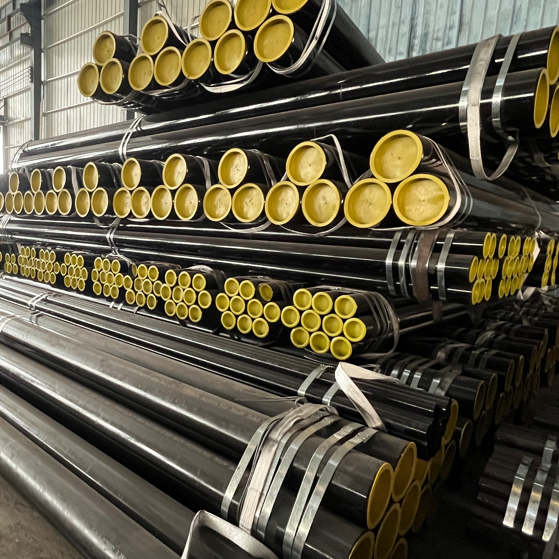SY/T 5037-91 Spiral steel pipe manufacturing process (SSAW/SAWH) is also called spiral welded pipe. It is a pipe blank rolled from low-pressure structural steel or low-alloy structural steel strip at a certain helix angle (called forming angle), and then the pipe seams are welded.
(1) The raw materials are strip coil, welding wire and flux. They must undergo strict physical and chemical inspections before being put into use.
(2) The head and tail of the strip are butted by single wire or double wire submerged arc welding, and automatic submerged arc welding is used for repair welding after rolling into a steel pipe.
(3) Before forming, the strip is leveled, trimmed, planed, surface cleaned and conveyed and pre-bending.
(4) The electric contact pressure gauge is used to control the pressure of the cylinder on both sides of the conveyor to ensure the smooth conveying of the strip.
(5) Adopt external control or internal control roll forming.
(6) The weld gap control device is used to ensure that the weld gap meets the welding requirements, and the pipe diameter, the amount of misalignment and the weld gap are strictly controlled.
(7) Both internal welding and external welding use the American Lincoln welding machine for single wire or double wire submerged arc welding, so as to obtain stable welding specifications.
(8) The welded seams are all inspected by an online continuous ultrasonic automatic flaw tester, which ensures 100% non-destructive testing coverage of the spiral welds. If there is a defect, it will automatically alarm and spray the mark, and the production workers can adjust the process parameters at any time accordingly to eliminate the defect in time.
(9) Use an air plasma cutting machine to cut the steel pipe into single pieces.
(10) After cutting into a single 5037-91 spiral steel pipe, each batch of steel pipes must undergo a strict first inspection system to check the mechanical properties, chemical composition, fusion condition of the weld, the surface quality of the steel pipe and non-destructive testing to ensure that the pipe making process is qualified. Only then can it be officially put into production.
(11) The parts with continuous sonic flaw detection marks on the welds shall be re-examined by manual ultrasonic wave and X-ray. If they are indeed defective, they shall be repaired and subjected to non-destructive inspection again until it is confirmed that the defects have been eliminated.
(12) The tube where the strip butt welding seam and the T-joint intersecting with the spiral welding seam are located shall all be inspected by X-ray television or filming.
(13) Each SY/T 5037-91 spiral steel pipe is tested by hydrostatic pressure, and the pressure is radially sealed. The test pressure and time are strictly controlled by the water pressure microcomputer detection device of the steel pipe. The test parameters are automatically printed and recorded.
(14) The pipe end is machined so that the verticality of the end face, the bevel angle and the blunt edge are accurately controlled.
SY/T 5037-91 spiral steel pipe is mainly used in water supply projects, petrochemical industry, chemical industry, electric power industry, agricultural irrigation, and urban construction. It is used for liquid transportation: water supply and drainage. For gas transportation: coal gas, steam, liquefied petroleum gas. Structural use: piling pipes, bridges; pipes for docks, roads, building structures, etc.
 Why should Seamless steel pipes be epoxy powder coated?
Why should Seamless steel pipes be epoxy powder coated?
 ASTM A106 Thick-walled steel pipe production steps
ASTM A106 Thick-walled steel pipe production steps
 Shengtian Group successfully participated in the Russian Oil and Gas Exhibition
Shengtian Group successfully participated in the Russian Oil and Gas Exhibition
 Is API 5L Black Steel Pipe Good For Air Lines?
Is API 5L Black Steel Pipe Good For Air Lines?